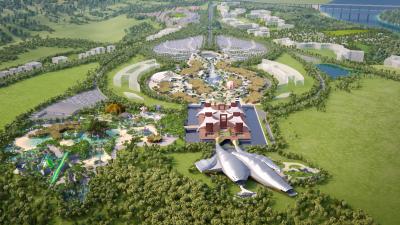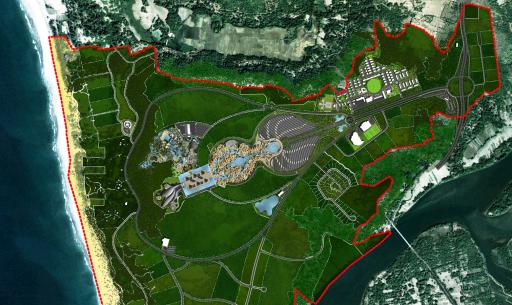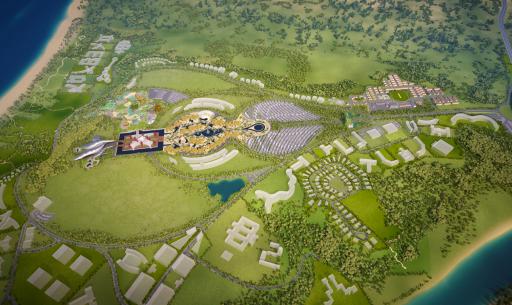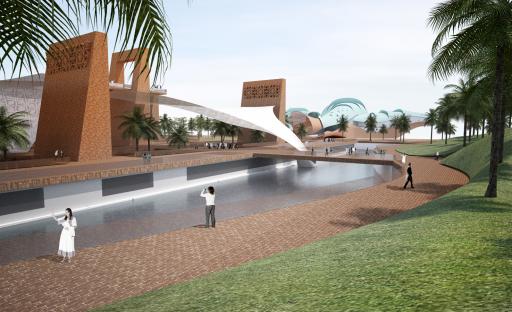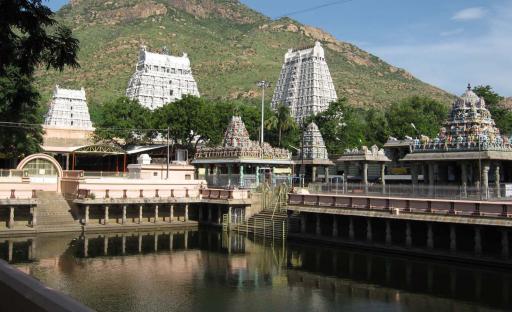The masterplan for Sea World, an aquatic exhibition park including oceanarium, research and conference facilities is located in Sindhudurg, Maharashtra, India.
At the heart of the masterplan, designed in conjunction with International Design Group and David Lazenby Design, is the Grand Cloister Landscape a pivotal new park structure which also supports the administrative offices and support facilities for the entire park.
The design for this large landscape serves as a counterpoint to the more flamboyant and noisy characters of the Konkan Village to the east, the themed water park experience to the north and the zoomorphic forms of the Oceanarium that is set immediately to the west on the forested escarpment facing the Indian Ocean.
The Grand Cloister landscape is organised as a clear rectangular form measuring 182 meters by 108 meters and provides space and opportunities for a variety of external events, including exhibitions, presentations and festivals.
It is surrounded by a wide undulating canal system with bridge links to the other parts of the park, which also create dramatic thresholds, heightening the sense of anticipation among visitors as they pass from one distinctly different park experience to another.
The design of the entrance landscape is inspired by the traditional Indian temples, like those at Ratnagiri, Tiruvannamalai and Madhurai. These magnificent stone ornate entrance towers ‘Gopuram’ are echoed in eight contemporary laterite ‘pylons’ of varying height of up to 30 meters, which also act as support for large tensioned Teflon canopies.
At the pylon basis entrances with lifts and stairs give access to the office and reception spaces below. The two larger pylons, at the centre of the plan, provide public access to the viewing galleries above providing a panorama of the park below and the dramatic landscapes and ocean beyond.
These laterite structures are configured as ventilation stacks and oriented to the prevailing wind to create a venturi effect drawing cool air across the water surface at the lower levels, through the office spaces and up through the towers, which increases passive cooling of the administrative areas below.
